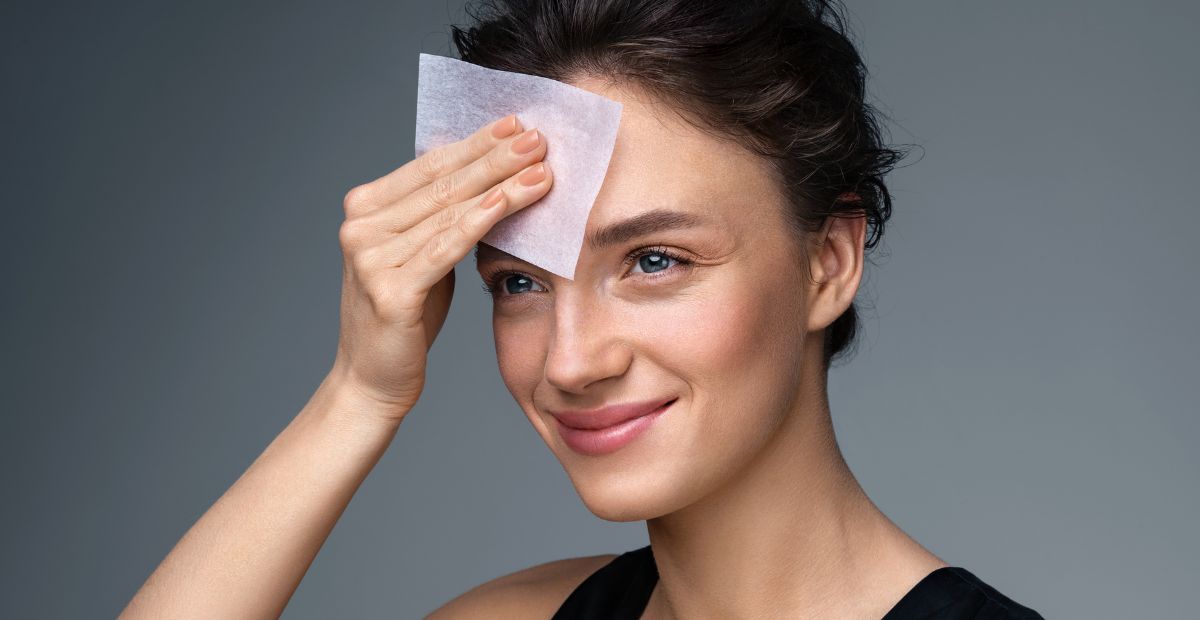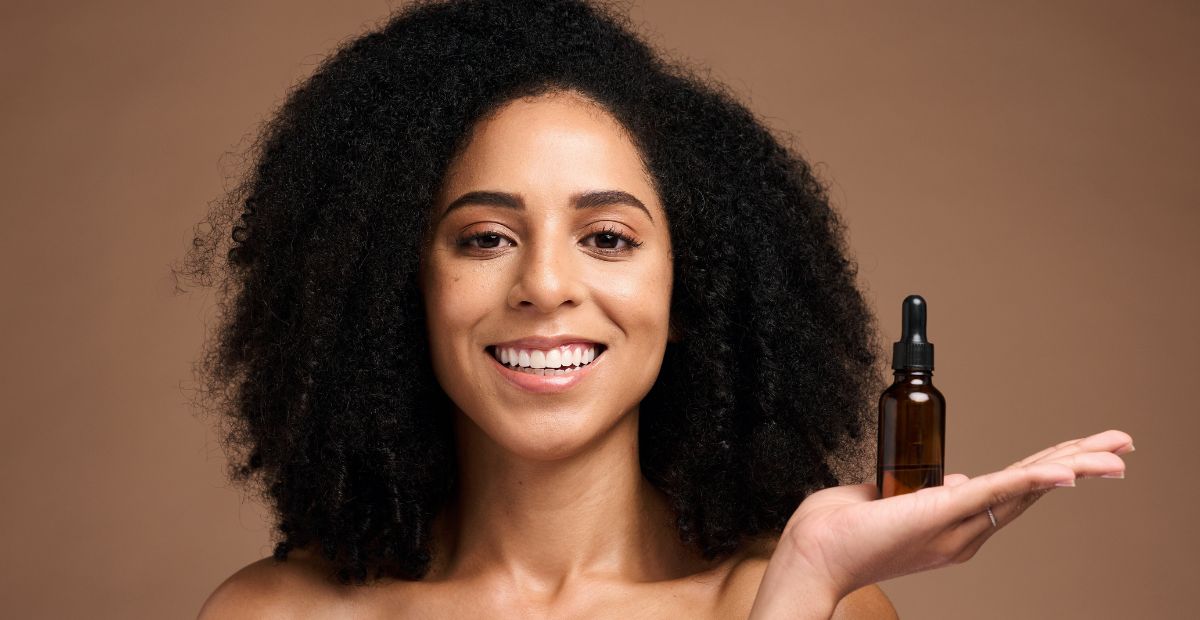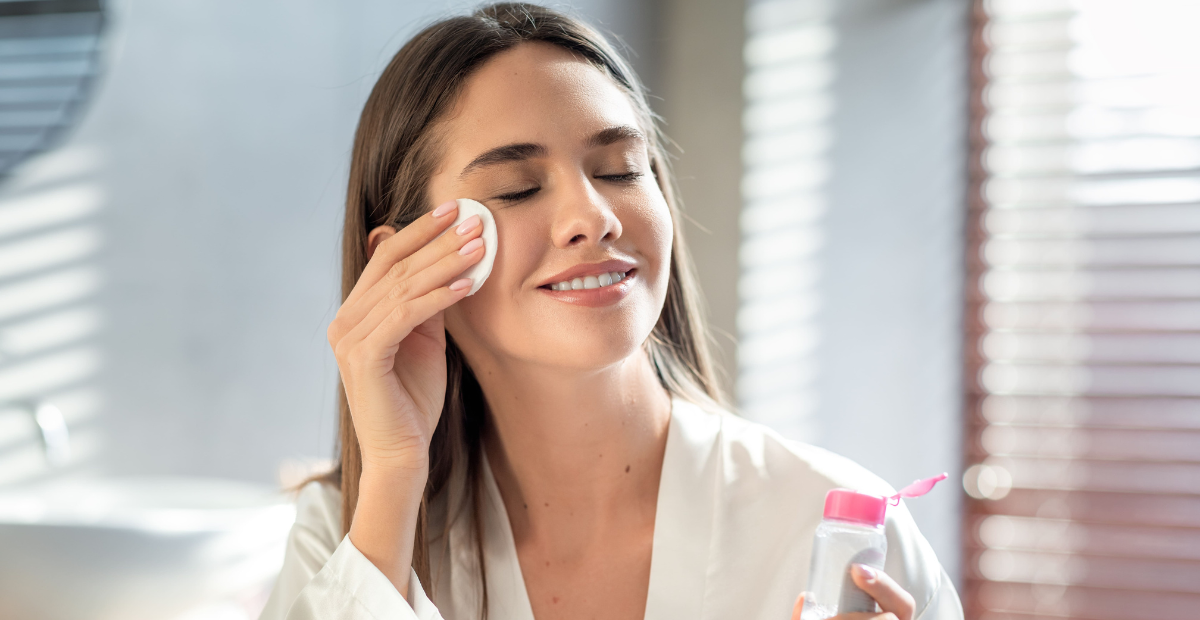How to Wash Your Face like a Pro: Dos and Don’ts
Onskin Content Team
Your guides through the skincare chaos
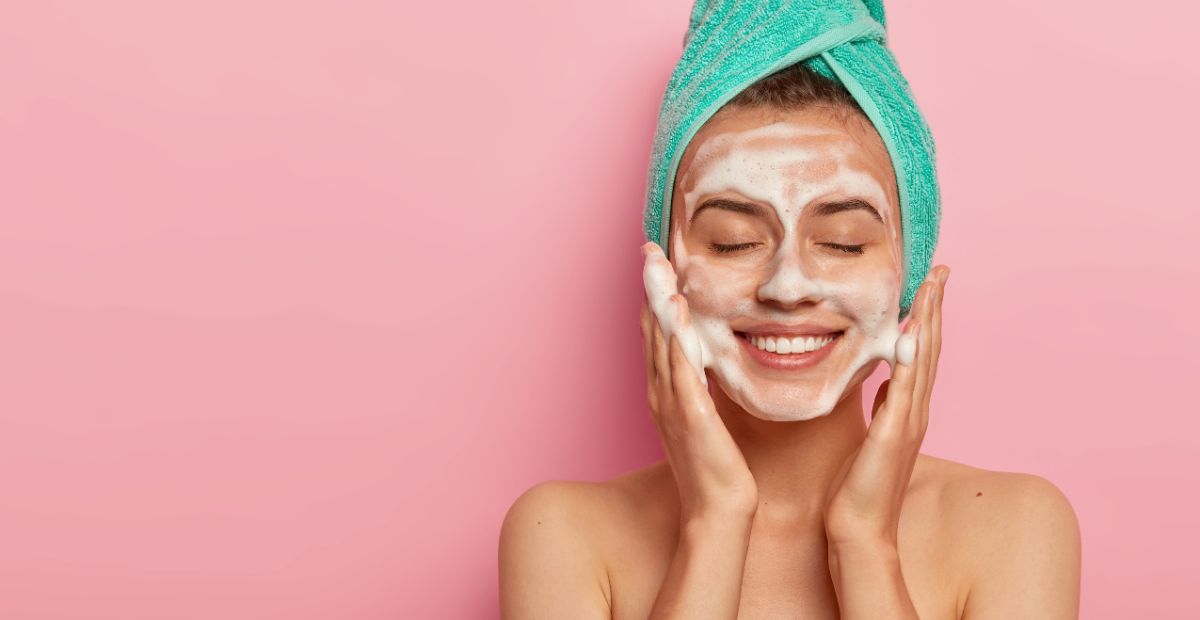
We all do it, but are we doing it right? Splash some water, rub a bit, rinse, and you’re done. But there’s actually a bit more to it if you want to keep your skin happy and glowing. Explore the ultimate guide on how to wash your face like a pro. Your best skin starts with these tips.
Do Use a Cleanser for Your Skin Type
Not all skin is created equal, and neither are cleansers. The first step is to identify your skin type—whether it’s oily, dry, combination, normal, or sensitive. You can easily find it out by taking a quick skin type quiz on OnSkin. Once you know your skin type, you can confidently pick the right cleanser.
Do Opt for a Gentle Cleanser
Can you wash your face with just water? Well, it’s better not to.
A cleanser is essential because it removes dirt, excess oil, and makeup without stripping your skin of its natural oils. So, no harsh soaps that leave your face feeling like it’s been through a sandstorm.
The American Academy of Dermatology advises you to have a gentle cleanser that is both non-abrasive and alcohol-free. It’s also wise to steer clear of bottles that contain sulfates and strong fragrances. The goal is to clean your face without damaging its natural barrier. Your skin will thank you. ❤️
Do Wash Your Face Twice a Day
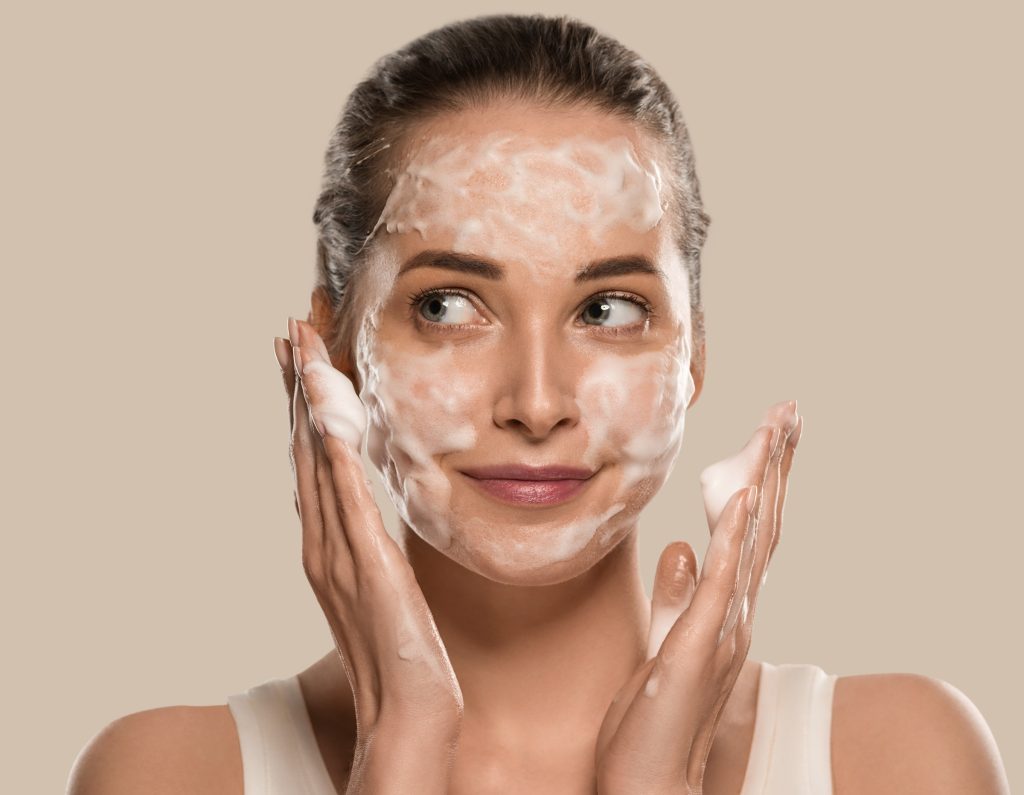
If you’re wondering “Should I wash my face twice a day?”, the answer is a resounding yes.
The rule is simple: wash your face once in the morning and once at night. And yes, even if you’re dead tired after a long day, that evening cleanse is non-negotiable. Why? Because your skin accumulates dirt, oil, and pollution throughout the day.
Plus, washing off your makeup before bed is crucial to avoid clogged pores and breakouts. Still, falling asleep with your makeup on is one of the things that worsen acne.
If you’ve been sweating, especially after a workout, make sure to cleanse as soon as possible. Extra sweat on your skin mixed with bacteria and dead cells may cause irritation. This is definitely not what you want!
Do Wash Your Hands First
This might seem like a no-brainer, but trust us, it’s easy to forget. Before you even think about touching your face, wash your hands thoroughly. You don’t want to transfer any bacteria or grime from your hands to your face. Think of it as prepping your tools before you start the job.
Don’t Use Hot Water
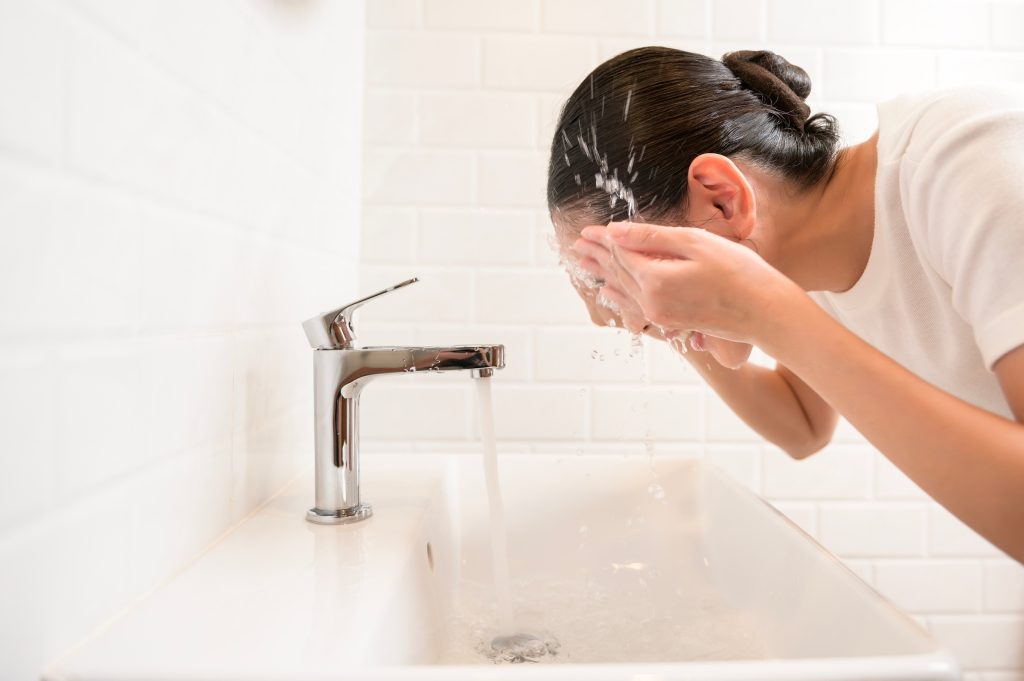
Hot water might feel soothing, especially after a long day, but it’s not doing your skin any favors. It can dry out and irritate your skin.
Simply stick to lukewarm water. It’s enough—if you’re figuring out how to wash your face with no extra harm. This helps in removing grime without stripping away essential oils. If you want an extra refreshing boost, try rinsing with cool water—it can help tighten your skin through better blood circulation. For those with acne-prone skin, cool water will help with pores appearing smaller.
Don’t Wash Your Face for Longer Than Two Minutes
Face washing should be thorough but brief. Spending more than two minutes on this step can actually harm your skin by disrupting healthy sebum production and causing irritation. Aim for 30 seconds to two minutes—enough time to cleanse without overdoing it.
Don’t Over-Cleanse or Scrub Hard
When figuring out how to wash your face gently but thoroughly, remember that less is more.
Over-cleansing or scrubbing too hard can damage your skin’s protective barrier, leading to dryness, irritation, or even breakouts. Be gentle and use your fingertips to apply the cleanser in circular motions. There’s no need to scrub your skin raw—remember, we’re aiming for a healthy glow, not a rosy rash.
Do Double Cleanse for Makeup or Sunscreen
If you love makeup or slather on sunscreen (you probably know how important that is), then double cleansing is a better-to-do for you. It’s all about using two types of cleansers—starting with an oil-based one to melt away makeup and sunscreen, and then following up with your regular gentle cleanser.
This two-step process ensures every last bit of dirt and oil is gone, leaving your skin perfectly prepped for the rest of your routine. But before you dive in, check out this guide on double cleansing to make sure you’re doing it right.
Don’t Exfoliate Every Day
Exfoliation is great for removing dead skin cells and keeping your complexion bright, but doing it too often can backfire. Daily exfoliation using, for instance, a scrub with beads can deplete your skin of its natural oils, leading to hypersensitivity and even premature aging.
Stick to exfoliating 2–3 times a week, depending on your skin type, and use gentle exfoliants to avoid overdoing it.
For daily cleansers, opt for products that contain lactic acid, glycolic acid, salicylic acid, or fruit enzymes. These ingredients are great at sloughing skin away. Still, checking what works best for your skin type first would be a smart move.
Do Gently Pat Dry with a Soft Towel
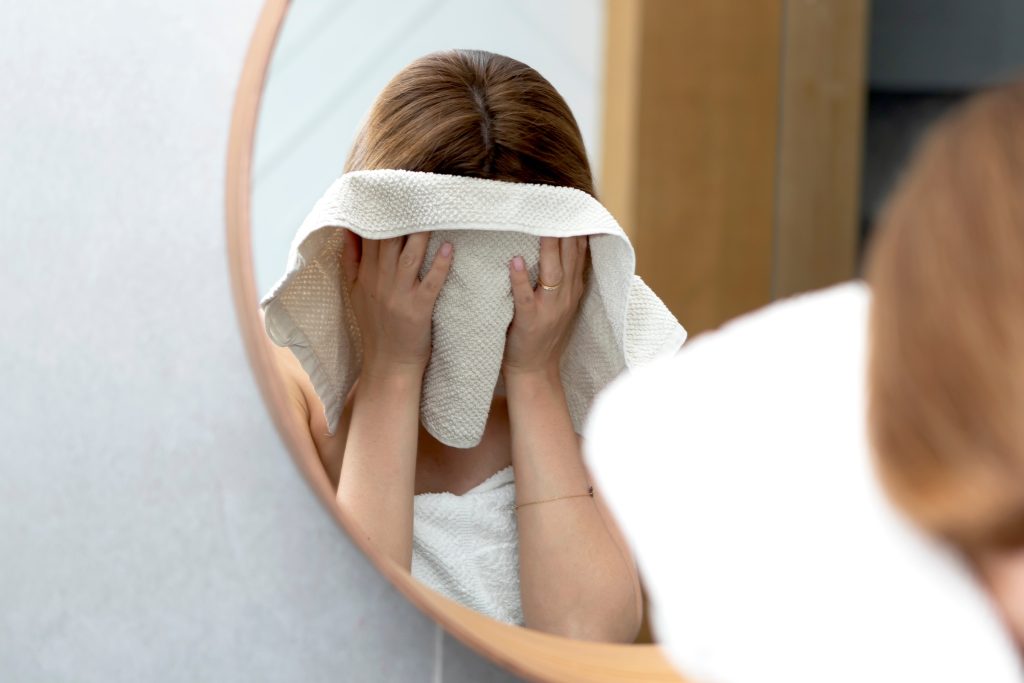
This is a simple yet important aspect of how to wash your face properly: avoid rubbing your skin dry. Instead, delicately blot your face with a soft and clean towel. Rubbing can cause skin irritation, especially if it’s sensitive.
Plus, always make sure your towel is just for your face and regularly washed—no one wants bacteria from a dirty towel all over their freshly cleansed skin.
If your skin is prone to breakouts or is highly sensitive, consider using clean, disposable tissues or face wipes instead of a towel. This can help keep your skin in better condition.
The Final Touch
So next time you head to the sink, think of it as a little self-care ritual rather than a chore. With the right products, the right techniques, and a little bit of love, your face-washing routine can become one of the most important steps in your skincare journey. And hey, your future self (with that glowing skin) will definitely thank you!
FAQ
-
Where do I start with OnSkin?
Download the app and think of a product you’d like to know more about. Then, go to the main screen and choose how you’d like to get the info —by manually looking it up in the search bar, by scanning its barcode, or by simply taking a picture of the packaging. Once you’ve done any of these, you can see how safe the product is and if it suits your skin or hair (if this analysis is available).
-
What is Safety Rating, and how is it calculated?
In OnSkin, we base product rates on ingredients. Each is closely studied by our medical team and then evaluated. This way, each product gets a score from 0 to 100, with 100 as the safest level.
Safety Levels
- Excellent (76–100)
- Good (51–75)
- Not great (26–50)
- Bad (0–25)
These scores are backed by the latest scientific studies. You can find links to the resources we’ve used on each ingredient page. To assess the safety of product ingredients, we evaluate them according to the following parameters/criteria
- Endocrine disruption risk / Reproductive toxicity
Indicates the probability of mimicking, blocking, or interfering with the body hormones.
- Сarcinogenicity
Measures the potential risk of inducing cancer.
- Allergy risk
Estimates the probability of an allergic reaction.
- High concentration alert
Determines the risk of being unsafe in certain amounts.
-
What is Skin Match?
Based on the info you input about your skin type, age, skin care goal, and other “settings,” OnSkin checks how well a product is tailored to your unique skin needs — it’s basically like a dermatologist helping you find the right products, minus the fees and the long wait. The product you’re checking might be labeled as It’s a match!, Hit-or-miss, or Not a match for you. The app also detects ingredient groups such as Anti-acne, Anti-inflammatory, Moisturizes, May be drying, Comedogenic, and others — by tapping one, you see exactly what ingredients from this or that group are in the product.
-
I seem to have a problem with using the app. Who should I contact?
Please reach out to us at [email protected], and we’ll carefully look into your issue. Your ideas for improving the app are also very welcome!
-
Do you have an Android version?
Not yet! Hey Android users, we hear you, and we're thinking about making an Android version, but we haven't started the development yet.
Tracker Sent!
It’s on the way to your inbox.


